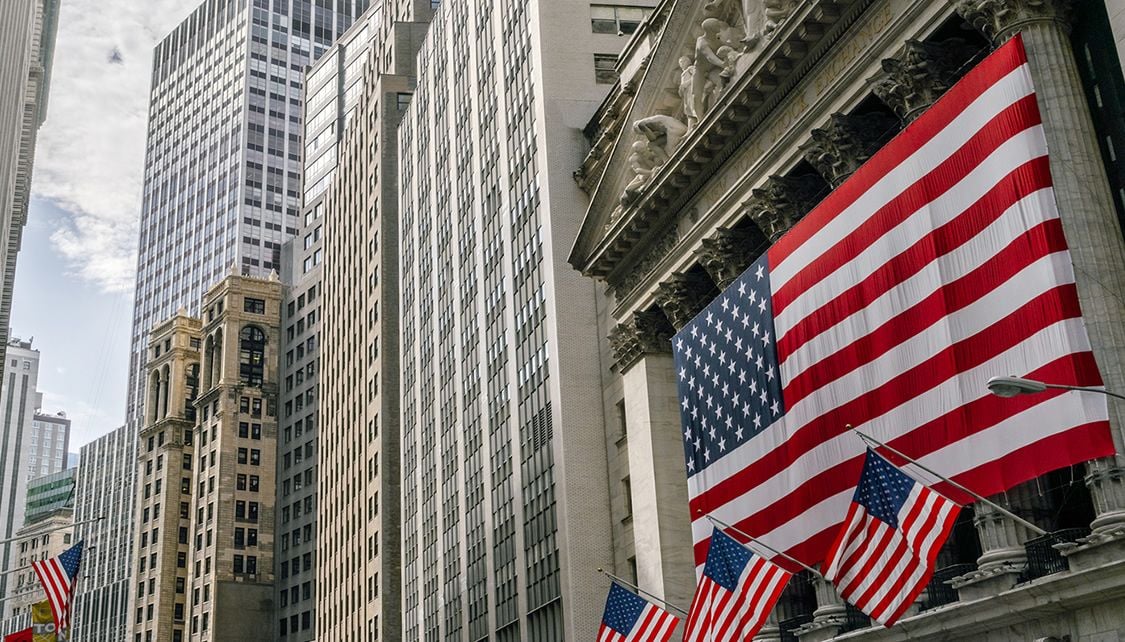US Dollar Falls, Rally Now Over as Global Growth is Picking Back Up
- Written by: James Skinner
-USD falls as global growth picks up, markets chase risk.
-Federal Reserve rates no longer the only game in town.
-Strategists say the USD can fall further in coming weeks.

© Adobe Stock
The US Dollar fell broadly on Thursday as markets chased so called risk assets higher after a near two-week period of risk aversion and, according to multiple currency strategists, the greenback can continue to fall during the days and weeks ahead.
Calls for an even weaker Dollar come after an almost eight week period in which the greenback converted a 4% 2018 loss into a 2% gain, as the US economy powered onward and upward while global economic growth appeared to have slowed.
This prompted a steep rise in American bond yields while keeping a lid on the rise in other government yields, incentivising investors to favour the Dollar over other currencies.
It is still early days but global growth has shown signs of picking back up and this already appears to be drawing investors and traders away from the Dollar, suggesting the tables may have turned on the US currency.
"Data surprise indices have improved," says Mazen Issa, an FX strategist at TD Securities. "Patience is required here, but the implication is that it may help to reduce the influence that higher US rates have held since the broad USD rally began some weeks ago and redirect the market's attention back towards prospective monetary policy shifts elsewhere."
Issa is right in that global economic data has become more supportive in the last fortnight. Eurozone inflation rose to within an inch of the European Central Bank's 2% target in May and German business sentiment stabilised at reduced levels after a months-long decline.
Meanwhile, the UK's key industries of services, manufacturing and construction have been seen recovering from a first-quarter decline in activity.
Elsewhere in the world, Canadian GDP growth rebounded from an earlier slump at the end of the first-quarter and Australia's economy surpassed all expectations during the first three months of the year. Chinese industrial production also posted a surprise increase for the April month.
As a result, the US Dollar has fallen steadily since the final days of May. The Dollar index was quoted 0.33% lower at 93.08 Thursday while major currency pairs like the Euro-to-Dollar and Pound-to-Dollar rates were all quoted higher.
However, this was on a morning where 10 Year US bond yields were also higher, up by 0.38% at 2.98%. In fact, those Treasury yields have risen steadily over the last fortnight, while the US Dollar has edged lower and lower.
"This somewhat resembled a case of de -coupling where rise in yields does not correspond with USD rising. And this can be attributed to the environment markets are operating in," says Saktiandi Supaat, an FX strategist at Maybank in Singapore. "The current environment is less risk -off, more promising and data/policy divergence is slowing. This reinforced our prior view that USD strength as a result of data and monetary policy divergence is temporary."
Supaat says that higher energy and commodity prices, as well as a steady improvement in labour markets across the globe, should boost inflation during the months ahead and encourage markets to begin thinking once again about interest rates elsewhere in the world rather than just those in the US.
"USD is a countercyclical currency – when global growth momentum picks up, USD tends to weaken," the strategist adds.
Markets looking back to interest rates outside of the US would be a negative development for the Dollar as it could cement the recent turning of the tables and provide a greenlight for investors to keep selling the greenback, in favour of chasing greater returns elsewhere. However, not everybody is convinced the US Dollar's day in the sun is over just yet. Some say current weakness can continue for a little longer, but that it should prove temporary.
"USD index can potentially trade to 92.50-93.00 near term but it's hard to see multi-week weakness beyond that given exceptionally strong US cyclical growth conditions," says Sean Callow, head of FX strategy at Westpac. "Altogether Q2 growth is running above 3% with some estimates nearer 4%."
Advertisement
Get up to 5% more foreign exchange by using a specialist provider to get closer to the real market rate and avoid the gaping spreads charged by your bank when providing currency. Learn more here




